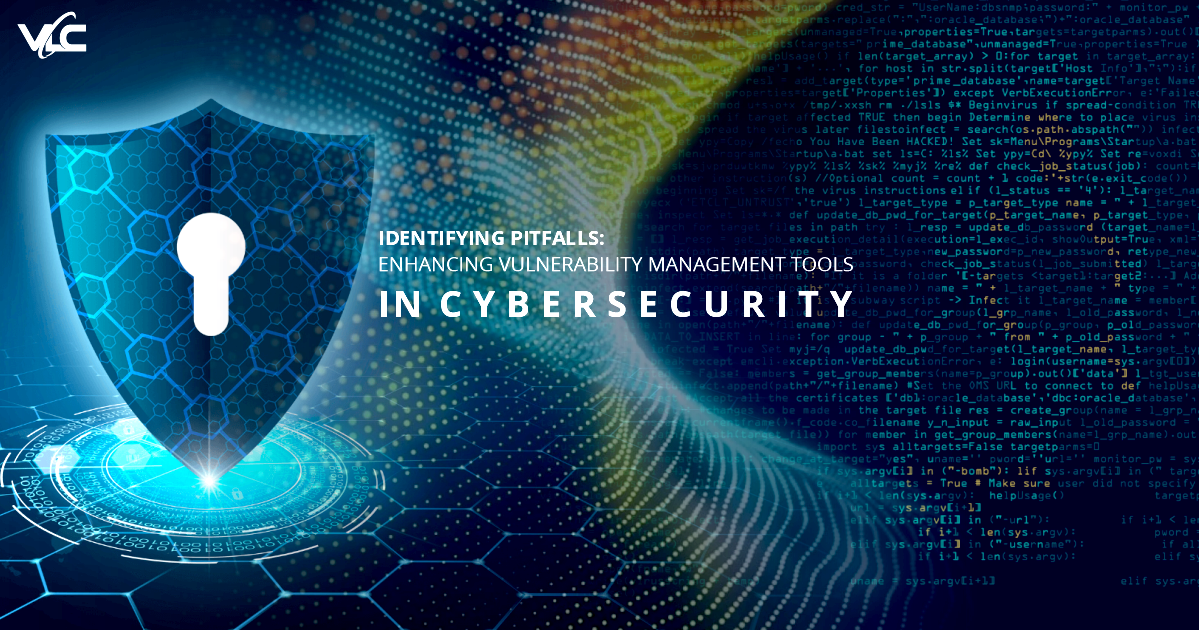Identifying Pitfalls: Enhancing Vulnerability Management Tools in Cybersecurity
Cybersecurity has become an indispensable concern in an increasingly digital landscape where businesses and organizations rely heavily on technology. As the threat landscape evolves, so must our defense mechanisms. Vulnerability management tools play a pivotal role in safeguarding digital assets and sensitive information. However, in the pursuit of airtight security, it’s essential to identify potential pitfalls within these tools to ensure they remain effective and resilient.
The Role of Vulnerability Management Tools
Vulnerability management tools serve as the frontline defense against potential cyber threats. These tools are designed to identify, assess, and prioritize vulnerabilities within a system or network. Organizations can proactively address potential security gaps by regularly scanning for weaknesses and offering actionable insights before malicious actors exploit them. However, the effectiveness of these tools hinges on their ability to navigate potential pitfalls that might undermine their purpose.
Common Pitfalls in Vulnerability Management Tools
Incomplete Coverage
One of the primary pitfalls organizations encounter is incomplete vulnerability coverage. These tools rely on comprehensive databases to identify known vulnerabilities. However, if these databases are not kept up to date or if they lack coverage of emerging threats, organizations may be left exposed to newer attack vectors. Regularly updating vulnerability databases is crucial to ensuring comprehensive protection.
False Positives and Negatives
Vulnerability management tools sometimes generate false positives (identifying a vulnerability that doesn’t exist) or false negatives (failing to identify an actual vulnerability). These inaccuracies can lead to wasted resources as teams address non-existent issues or overlook real threats. Continuous refinement of scanning algorithms and methodologies is essential to minimize these errors.
Lack of Contextual Prioritization
Not all vulnerabilities are created equal; they vary in terms of potential impact and exploitability. Without proper contextual prioritization, teams might focus on less critical vulnerabilities while overlooking high-risk ones. Integrating threat intelligence and risk assessment into vulnerability management tools can enable organizations to prioritize remediation efforts more effectively.
Scalability Challenges
For larger organizations or those with intricate IT infrastructures, scalability becomes a concern. Traditional vulnerability management tools might struggle to scan and analyze extensive networks in a timely manner. Scalability should be a key consideration when selecting or developing vulnerability management solutions to ensure they can accommodate an organization’s growth.
Lack of Integration
Cybersecurity is a holistic endeavor, and vulnerability management is just one piece of the puzzle. If vulnerability management tools operate in isolation from other security tools, valuable insights might be lost. Integration with other security solutions, like intrusion detection systems and security information and event management (SIEM) platforms, enhances overall threat visibility and response capabilities.
VLC Cybersecurity Services: Your Partner in Strengthening Defenses
Amid these challenges, organizations need a trusted partner to navigate the intricacies of vulnerability management and cybersecurity as a whole. VLC Cybersecurity Services stands as a beacon of expertise and innovation in the field. With a firm commitment to addressing the pitfalls that can compromise the effectiveness of vulnerability management tools, we offer tailored solutions that ensure robust protection.
Comprehensive Vulnerability Coverage
At VLC, we understand the criticality of staying ahead of the threat landscape. Our vulnerability management tools are backed by up-to-date databases and continuous monitoring, ensuring that organizations receive the most accurate and comprehensive vulnerability coverage available.
Precision through Contextual Analysis
False positives and negatives can disrupt operations and undermine confidence in cybersecurity efforts. Our tools incorporate advanced contextual analysis techniques, minimizing inaccuracies and allowing organizations to focus their efforts where they matter most.
Strategic Prioritization
We recognize that every organization has unique security needs. Our vulnerability management solutions go beyond the basics, incorporating contextual information, threat intelligence, and risk assessments to help organizations prioritize vulnerabilities based on their potential impact and exploitability.
Scalability as a Cornerstone
Scalability is non-negotiable in a rapidly evolving digital landscape. Our tools are designed with scalability in mind, ensuring that your cybersecurity defenses can seamlessly expand as your organization grows to accommodate the evolving threat landscape.
Holistic Integration
Cybersecurity is a team effort. Our services extend beyond vulnerability management, integrating seamlessly with your existing security infrastructure. This holistic approach provides a unified view of your security posture, allowing for more informed decision-making and a quicker response to emerging threats.
The effectiveness of vulnerability management tools is pivotal in maintaining robust cybersecurity. By identifying and addressing potential pitfalls, organizations can enhance the capabilities of these tools to safeguard their digital assets and sensitive information. VLC Cybersecurity Services offers a comprehensive suite of solutions that address these pitfalls head-on, giving organizations the confidence to navigate the complex cybersecurity landscape. To fortify your defenses and explore tailored solutions, reach out to us today. Your security is our priority.
